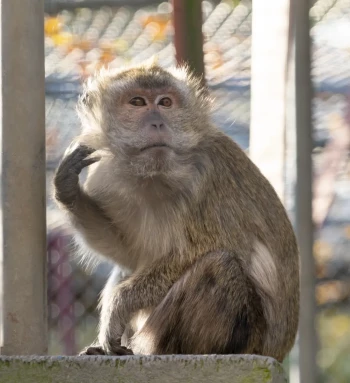Selection
Not all of our monkeys are used in studies. In fact, most of them are not. Only about 10% of our monkeys will undergo testing in any given year. BPRC has a thorough selection process, in which the colony manager (an ethologist), veterinary physicians and geneticists closely cooperate. In this way, we ensure that our breeding programme is successful, prevent inbreeding and make sure that we select the best possible animals for our research projects
Each individual is unique
Non-human primates are approximately 93% genetically identical to humans. Monkeys are particularly similar to humans in terms of their immune system and brains. This also means that, just like humans, they are all individuals, with different personalities. For this reason, we assess each individual monkey for its suitability to particular types of tests. Many are found to be better suited to the breeding colony. Because all monkeys have different personalities, our animal care workers know exactly who is who.
For starters, our monkeys will never be under the age of 4 (rhesus and crab-eating macaques) or 1.5 (marmosets) before being considered for experimentation purposes.* The age at which the males leave their birth group partly depends on how quickly they mature. The sooner they are sexually mature, the sooner they are able to impregnate their half-sisters and others, which we are seeking to avoid.
* Marmosets are used for experimentation purposes at a younger age because their lifespan is shorter and they mature (and become sexually mature) at a younger age (age 1.5 to 2). Other than that, they have the same living conditions as our rhesus and crab-eating macaques, although they do live in smaller family groups: just parents with their offspring, who will often be twins.
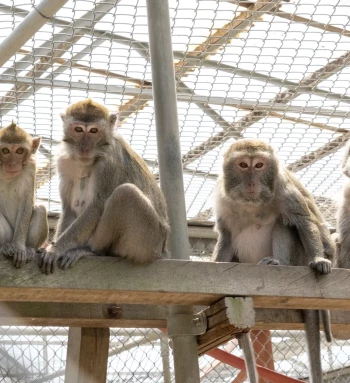
Just like in the wild
Generally, young animals will remain in their birth group until they reach the aforementioned ages. These are the ages at which they would migrate to other groups if they were living in the wild. In this way we seek to imitate natural patterns to the maximum degree possible. This arrangement also entails that, just as with human beings, the young learn from their parents. This approach reduces the amount of anxiety experienced by the animals during experiments, since they are more mentally stable than animals which were removed from their birth group at an early age.
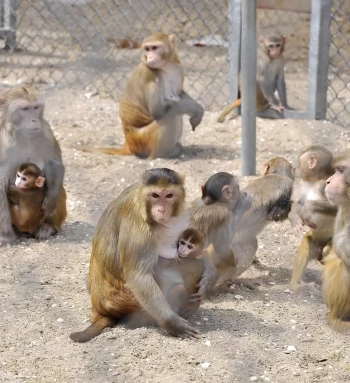
Male and female animals
When selecting animals, we make a sharp distinction between male and female monkeys. Female monkeys have a 50% chance of remaining in the breeding colony their entire lives, and of never being used for experimentation purposes. This is because they can spend their entire lives in a group and so can always be of value to the breeding group, which must be kept up and running. It should be noted that we may be able to use contraception in the near future, when we expect to need fewer animals.
BPRC has several rhesus macaque breeding groups, so that we only need a limited number of breeding males. Therefore, the majority of our male rhesus macaques are used in experiments. All young males are transferred from their breeding group to a separate enclosure, which they share with several other males. We keep them together for as long as possible.
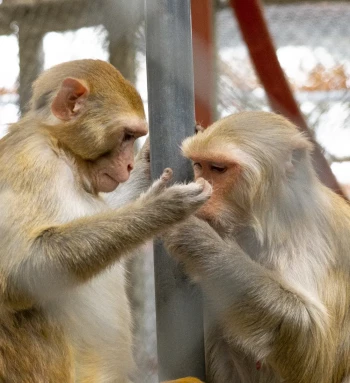
Breeding or experiments
The colony manager serves as our behavioural expert (ethologist). In consultation with veterinary physicians and geneticists, s/he determines which animals are suitable for research and which are not, and for which particular studies they might be suitable. Some animals may be right for (a particular type of) research, but may be genetically more important to the breeding colony. At some point, the colony manager will decide whether such young males are better suited to being future breeding males, or whether they are better suited for experimentation purposes. If a young male is destined for breeding purposes, he will have to wait until age 7 or 8 at the earliest, or he will be unable to reproduce. After that he will be removed from his birth group and transferred to a different group (so as to prevent inbreeding), and at age 18 or so he will ‘retire’.
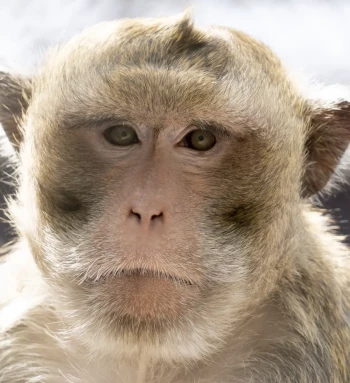
Experimental stage
Animals selected to be used in experiments are transferred to a different enclosure, where they will live in small groups of two to four same-sex monkeys. In these new enclosures, they are prepared with great love and care by our animal care workers for their further lives as experimental animals. They are provided with a great deal of enrichment to make their lives more pleasant, just like they were earlier in their birth groups.
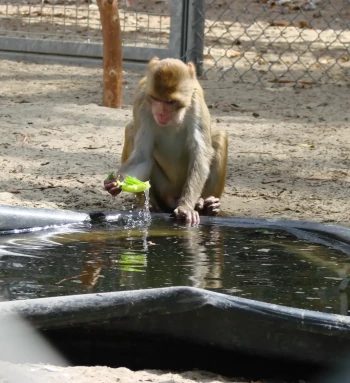
Positive reinforcement
This preparation mainly consists of more intensive training. By that time, they will already have learned how to drink from a squeeze bottle, and now they will learn to do things such as opening their mouth, extending a hand or paw, and turning around. They will get a reward every time they do this – i.e., ‘positive reinforcement training’ (more on that in this story). Due to the duration of certain studies, the experimental stage may last several years. For this reason, we make sure that the animals do not stay in this environment for ever. Many of the monkeys will be euthanised in the end, for animal welfare reasons. Legislators check annually how many animals we have deployed for experimentation purposes.
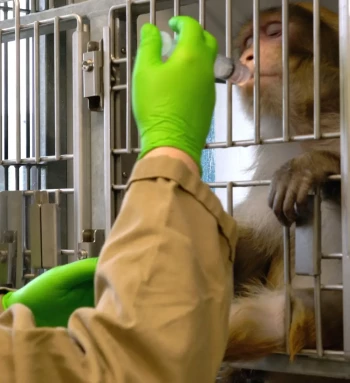
Vet has final say
Needless to say, we do everything in our power to prevent our animals from suffering. When the animals are to be experimented upon, they receive general anaesthesia (in accordance with all the guidelines), and they are given analgesics to combat side-effects. But a lot is done before the animal gets to this stage, as well. In order to be granted permission to carry out a particular study, we must first estimate the amount of suffering, i.e. discomfort, an animal is likely to experience. We do our utmost to minimise the animal's level of discomfort. It should be noted that, when we conduct our studies, veterinary physicians have the final say on whether or not a study is to be continued. BPRC currently employs four vets, as well as a veterinary pathologist.
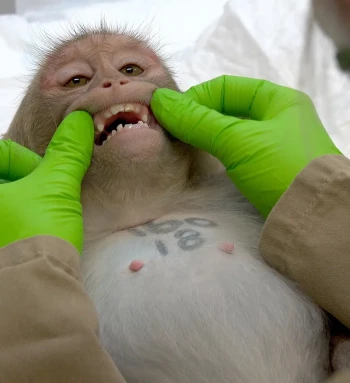
Animal welfare
The decision as to whether a particular animal can be used for experimentation purposes also depends on the animal's health status. BPRC frequently assesses its monkeys' health, both before and during tests. Animals undergo annual screening as a matter of course, and if they are found to be sick in any way, they will receive treatment and will not undergo experimentation. Animal welfare is our greatest priority. When an animal dies, we can store its usable organs and tissues for future or alternative studies (for more on that, read this story). For instance, we can use its liver to cultivate cells.
In this way, all the animals we accommodate, even the ones not used in experiments, are of tremendous value in the fight against serious diseases.
